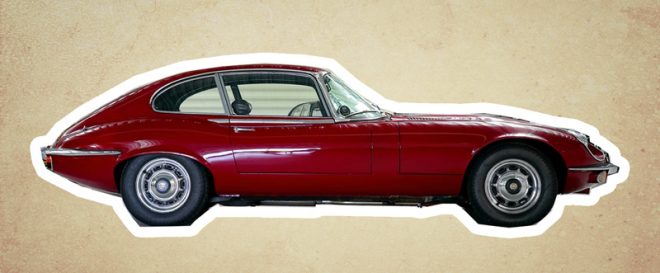How to Buy a Used car: 9 Tricks I wish I’d Known

Buying a used car is something pretty much all of us do at some point in our lives. It’s also something a lot of us do badly at least once. And that can be a pretty expensive mistake.
There are a few things I wish I’d known the first time I bought a used car, from what to look out for to what to say.
There are also a few steps worth taking before you even consider a viewing, whether that’s with a dealership or a private seller. Good, solid prep work that will save you time and money.
1. Buy what you need, not what you want
It’s so easy to be seduced by a car that ticks every box (of your 12-year-old mind). Cream leather seats are a real touch of luxury, but only before your jet-black dog takes one trip in the back and ruins them. Yeah, maybe that needed a bit more thought.
Practicality is king here.
If you’re driving across town every day, you might want a petrol engine. That way you get a bit more bite with the accelerator.
On the other side of that, diesels are more economic on the highway for those of us who do most of our driving at 70mph.
Let’s slow down and think about this. Consider practicality, fuel economy and maintenance costs before you even think about scrolling through used car sites online.
2. When it comes to cost, consider everything
Your budget is great, except you forgot about adding in running costs. So now you have a great car that you can’t afford to keep on the road. Suddenly the cheap price makes sense. The seller wanted to get rid of it because, lo and behold, they couldn’t afford to run it either.
Research is so important.
Let’s say you saw a premium-brand, luxury car for only $1,000 more than a standard model at the local dealership. Surely worth the extra money, right?
Thing is, standard car models are a staple of American roads, which means their parts are generally cheap and easy to find. Luxury cars on the other hand, not so much – parts may be imported and are usually expensive. Both are prone to breakdowns (as are all cars), but one could end up hitting your wallet a lot harder in the long run.
So be careful about spending extra on what may look like a good deal. There’s almost always a catch, from high insurance premiums to heavy fuel consumption. Consider research as a priority.
3. How to do the basic mechanical tests
You can fake it with some strategic grunting and knowing looks, or turn up with oily hands and a set of overalls on. Or you could just carry out these simple tests, making sure the engine and suspension are in good order.
Engine
First of all, look under the hood. Pull the dipstick out and check the oil.
- If you smell gas, the piston rings are worn down.
- If the oil is milky, then coolant is leaking into the sump.
- The worst one is metal flakes – oil that shimmers with metal means the engine is ripping itself up and depositing into the oil.
Once that’s done, start the car up and give it some revs. If you have a friend with you, get them to stand behind the car. If you’re on your lonesome, inspect the exhaust while the seller revs the engine.
Have a look at the exhaust fumes. You want to see clear fumes to show the engine is burning fuel efficiently.
- If a load of black smoke spits out, then too much fuel is coming through.
- Sometimes clouds of white smoke pour out, which probably means coolant is also being burned.
- There can also be blue smoke caused by burning oil.
Any of these signs is a worry. Ask the seller for more information and a discount related to fixing the issue. If they won’t budge, it’s time to go. You can feel happy you’ve got yourself out of a bad deal though.
Suspension
It’s not always easy to detect a suspension problem during the test drive. Not unless you’re an expert anyway. The easiest way is to walk around the car, pushing it down above every wheel.
If it springs back into place then it’s all good. If it doesn’t, start asking questions.
4. Researching a car’s common problems is vital
If you know what might go wrong with the car, you’re already well ahead. Check websites like Car Complaints to get the lowdown on the traditional issues that affect the car you want.
For example, some cars are known to have air conditioning units that fail after a few years. You can identify this by looking for dampness under the foot wells. After your check, you can ask the seller for a discount to repair the issue. If they say no, then you’ve been spared the ropey air con even if you didn’t get the car you wanted.
5. Taking a friend is invaluable
Having a friend with you is pretty much a no-brainer. However, a lot of us don’t bother taking someone else along to a used car sale. Ok, so you might have to buy them lunch for their trouble, but that could be the best investment you make all day.
With a friend you have backup. They can help you with the mechanical checks, give another set of eyes to the bodywork, and even come along for the test drive. They might even talk you out of making a rash decision, something that happens a lot when buying used cars. Before the two of you go, though, take this quick quiz to see if you’re ready.
6. Take the test drive seriously
In the US, one in six people don’t even get into the car they’re buying. That stat is crazy when you consider a car is one of the biggest investments any of us make.
But if you do get in, are you actually doing enough to get a good measure of the car?
The main thing to remember is that it’s a ‘test’ drive. So go and stop/start it on a hill and make sure the power is there. Then move onto a fast road. The engine should sound rhythmic, without any whirring or high-pitched noises (a screeching sound usually means a problem with one of the belts).
Find a safe area and give the brakes a good go. If the car turns to either side, then at least one new pad is needed. As with any problems you find, ask for a discount to pay for it.
One problem that’s easy to ignore is the air conditioning. Remember to whack it on full blast, both hot and cold. It’s that classic thing of buying a used car in the winter and not checking the cold air. And then you’re struggling in the heat all summer.
Important: Only ever view a car on a clear day
Can you see little dents on the hood if it’s raining? Nope.
Can you spot a bad spray job on a side panel in the dark? Probably not.
Should you have waited till tomorrow to see this car? Yep.
7. There is always another car
First-time buyers always feel like they’re in a rush. That there will never be another chance to get a good deal. It’s every salesperson’s dream. However, the truth is that the used car market is bigger than it has ever been. Your choice is huge, and if you follow all of these tips, good deals will pop up pretty regularly. This point can also help you when it comes to bartering. Turn the transaction on its head – tell the seller you have a lot of options and ask what their best deal is.
8. Having a checklist is a must
There’s an awful lot to be said about making notes the old-fashioned way, and it’s no different with a used car checklist.
Seriously, unless you have a photographic memory, you’re going to forget to check or mention something during the viewing.
Writing everything down gets rid of that risk:
- The car model’s common faults (and how much they might cost to fix)
- List of basic tests (where to look, what for)
- Questions you have after seeing the advert, maybe about the low mileage, new bodywork or previous owners
9. Take advantage of dealership targets
Most dealerships look to hit quarterly sales figures. So if you walk in at the right time, a good deal could be waiting for you at the other end. When is that right time? Generally speaking, it’s the end of March, June, September and December.
Anyone who’s worked in sales knows a salesperson will do anything to hit that final deal for a big bonus. Car dealerships are no different. In fact, they pretty much wrote the book on it. So take advantage and make a nice low offer in late June. Who knows, you might even have some money left over for a last-minute summer holiday!



